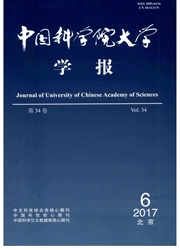

 中文摘要:
中文摘要:
以大豆和花生幼苗为研究对象,借助15N示踪技术研究生物炭添加量(0、0.5、2.5和10mg·g-1)对大豆和花生两种豆科植物幼苗的生物量和氮素吸收速率的影响。研究发现,同对照相比生物炭添加未显著改变大豆幼苗的总生物量,但两个较高剂量添加处理之间存在显著性差异;生物炭添加未显著改变花生幼苗的生物量,但最大剂量添加显著增加其根冠比。随着添加剂量的增加,生物炭显著降低大豆对15NH4+和15N-glycine的吸收速率,但对15NOr吸收速率的降低作用相对较弱。生物炭添加显著降低花生对15NH4+的吸收速率,而对15NO3-吸收速率的影响表现为先增加后降低的趋势,生物炭未显著改变花生对15N-glycine的吸收速率。以上研究表明,生物炭能够影响作物氮素吸收速率,但影响依赖于物种差异及生物炭添加剂量。因此对农田土壤进行生物炭添加时,应考虑物种属性和氮形态的差异以提高氮素利用效率和维持作物产量。
 英文摘要:
英文摘要:
15N-labeling technique was used to investigate effects of biochar addition (0, 0. 5, 2.5, and 10 mg-g-1) on biomass and nitrogen uptake of Glycine max and Arachis hypogaea seedlings. We found that biochar addition did not significantly alter total biomass of G. max seedlings compared to control, while a significant difference was observed between two higher addition levels. Biochar addition did not change total biomass of A. hypogaea seedlings, but the highest addition level significantly increased its root to shoot ratios. Increased biochar addition substantially reduced uptake of 15NH4 and 15N-glycine by G. max seedlings, but weak effect on uptake of 1SNO3- was observed. Biochar addition significantly decreased uptake of 15 NH4+ by A. hypogaea seedlings, but did not significantly affect uptake of 15N-glycine. In contrast, uptake of 15NO3 by A. hypogaea seedlings increased first and then decreased with biochar addition. This indicates that biochar addition affects nitrogen uptake by crops, but the effect depends on plant species and amount of added biochar. Therefore, species and nitrogen forms should be considered when biochar is used as a management measure for agricultural soil to improve nitrogen use efficiency and crop production.
 同期刊论文项目
同期刊论文项目
 同项目期刊论文
同项目期刊论文
 期刊信息
期刊信息
